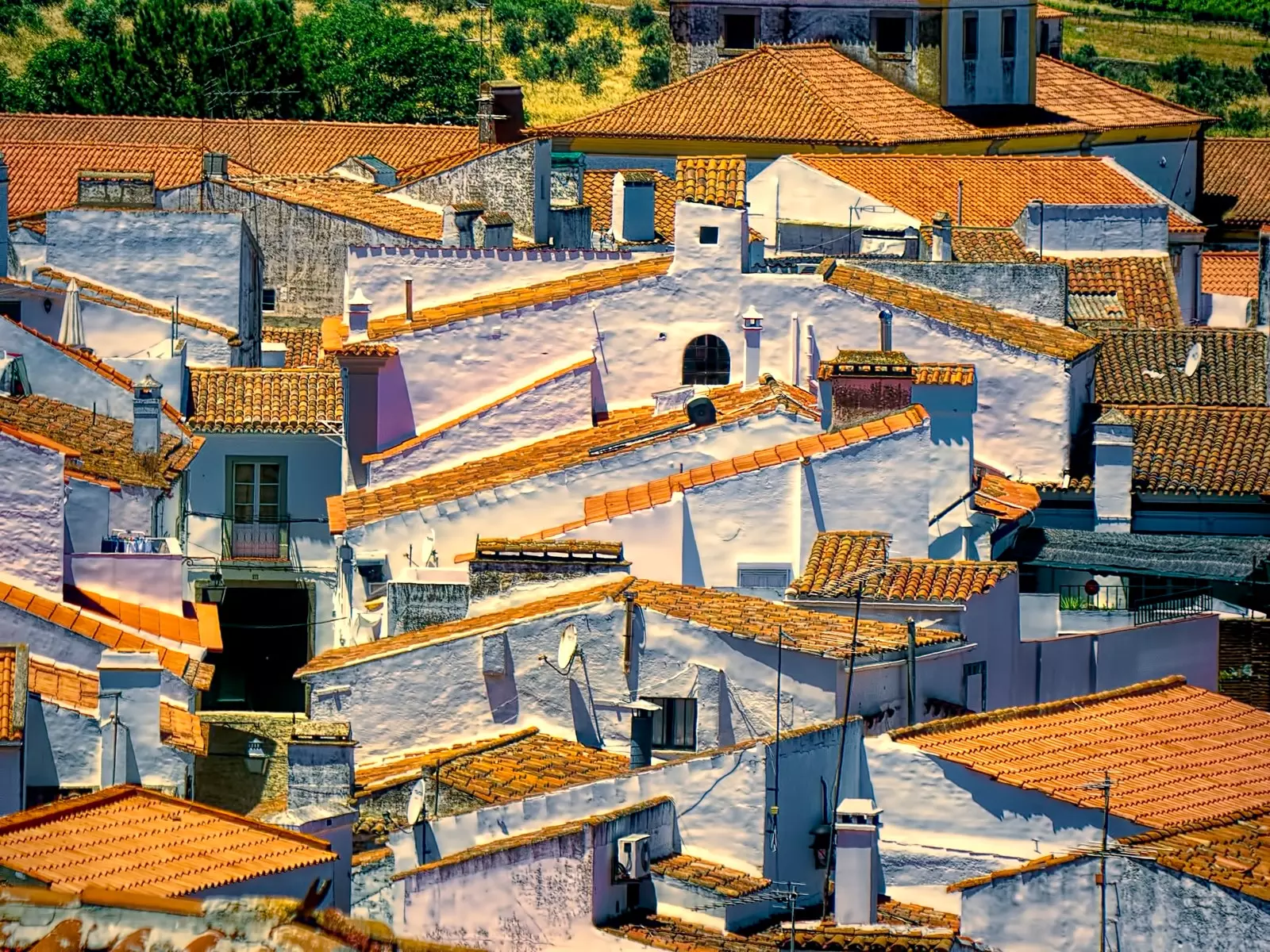
Rooftops and picturesque windows in the tangled alleys of Évora.
Évora welcomes us with a cloudy sky that predicts an interesting day. The clouds, which seem to have grown fond of this little piece of Portuguese Alentejo, They decide to stand on us and drop a kind of chirimiri, that almost imperceptible fine rain that allows you to walk without causing any drama. Rather the complete opposite: Évora is beautiful even when it rains. But it does. And everything is better this way: we have it all to ourselves.
Delving into the bowels of its medieval walls, the same ones that have been guarding the city since the 14th century, means immerse ourselves in a nest of alleys that twist at will between slopes —the city is on a hill above the Alentejo plain— and historic buildings. The road, made up of thousands of rounded cobblestones, It makes no street look like another and makes us think, inevitably, of the blessed moment when we decided to put on our sneakers...
It is these details that make it take us only five minutes to fall in love with the city, the ones that take us reach the imposing temple of Diana from Praça do Giraldo, one of the most historic, beautiful and central. Évora, friends, is truly wonderful.
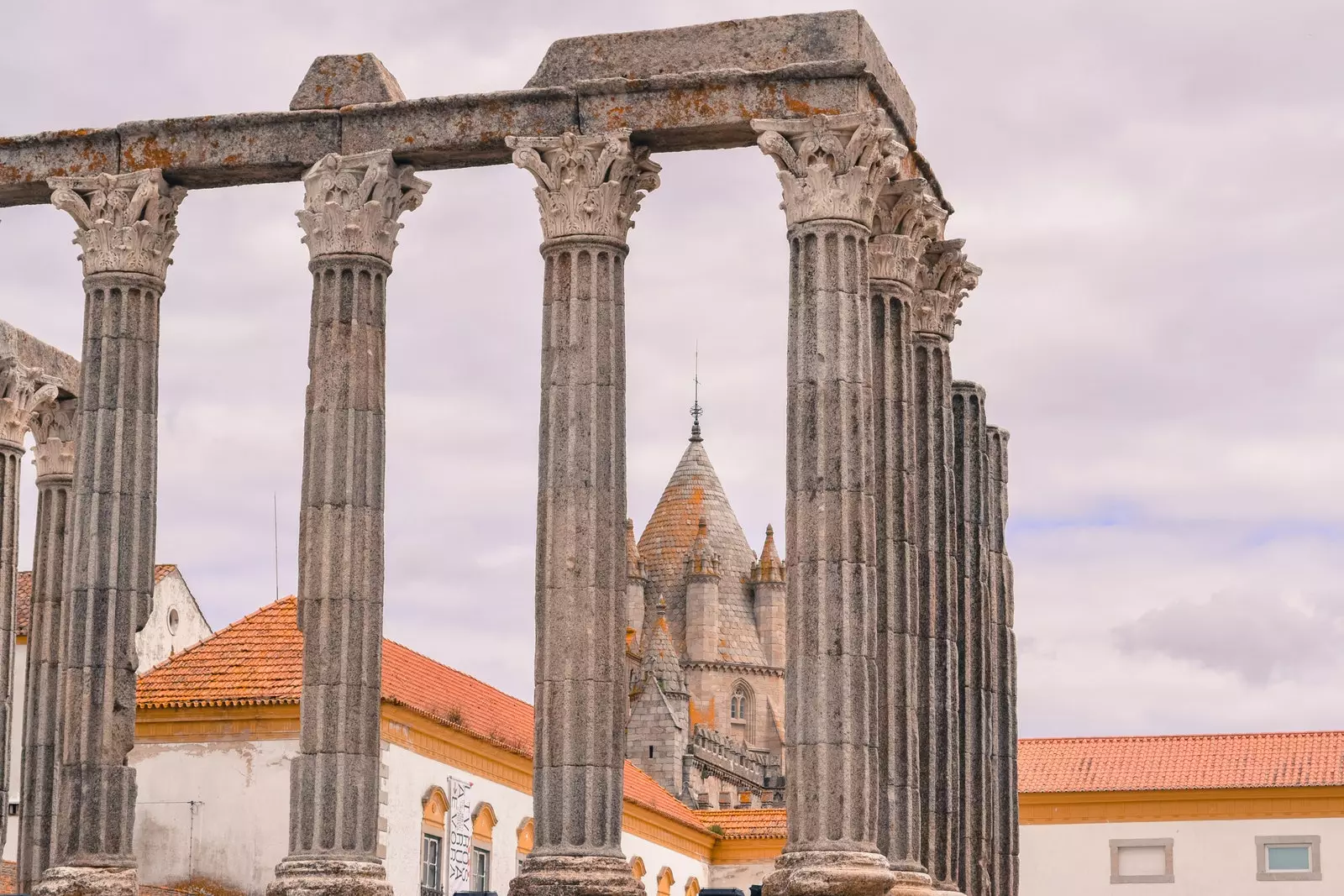
Temple of Diana, in Evora.
LETS START BY THE BEGINNING
From a very, very distant beginning, of course. Because it was the second century AD. C. when Emperor Hadrian, born —by the way— in the Roman city of Italica, in Seville, ordered the one that is considered one of the best preserved Roman temples in the entire Iberian Peninsula. Now, just as if time had barely passed through it, we gaze at it before us with heads held high, lest any detail escape us.
But it wasn't always like that: how lucky we are to be able to enjoy its 14 Corinthian columns, which remain almost intact, This is mainly due to the fact that during the Middle Ages they were walled up. They remained that way until well into the 19th century, when they uncovered this true heritage treasure.
Although talking about treasures, in the case of Évora, is quite easy. In fact, it accumulates such a quantity of them that it is not surprising that the 40 hectares of its old town have been declared a World Heritage Site by UNESCO.
The idea of the initiatory walk to make us a first mental map of the city does not fail - it never usually does. This is how we we ran into the Cathedral of the Sé. We decided to scrutinize every inch of its interior, where Gothic and Romanesque embrace and masterfully combine, while we debate about what seduces us more, the majesty of its chapels, the beauty of its medieval cloister —is such beauty really possible?— or the views from its towers.
It took no less than 60 years to build and was completed in the 12th century. In addition, Vasco da Gama himself passed through it to bless the flags of his ships in 1497. Leaving the building, the view goes to the apostles carved in stone flanking the portico. Yes, another treasure.
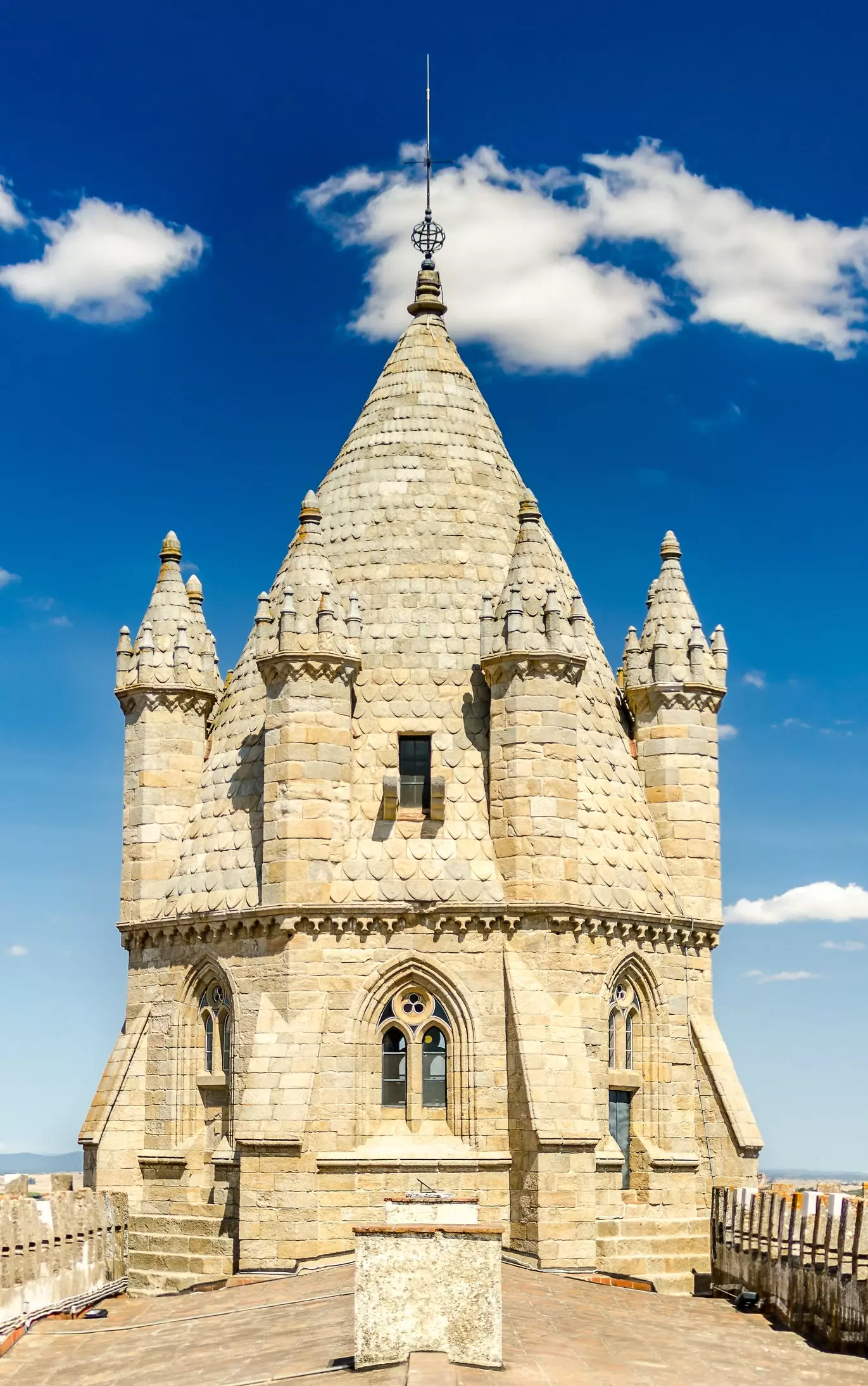
The views from the Sé de Évora tower are impressive.
STOP AND FONDA
And it will be that, suddenly, we feel like a little stop. The luck is that two steps away we have the rua Cinco de Outubro, the main thoroughfare of Évora: pedestrian and full of shops, it is impossible not to stop every two steps.
In it is precisely the shop and tasting room of Ervideira, one of the most traditional wineries in the region: began its journey in 1880 and is now in the fifth generation of the same family dedicated to its production. Because the Alentejo, if you didn't know it, is the land of wonderful wines with denomination of origin that, in addition, taste like glory.
We dare to taste three of them made in their Vidigueria and Reguengos wineries. With each sip of Invisible, Vinho da Agua and Condé de Ervideira. The last two are made with the same grape from the same vintage, except that the first is kept at a depth of 30 meters in the Alqueva reservoir and the second is stored in the cellar for 10 months. Our hostess enlightens us with a complete talk about the details and details of Alentejo wines. In case anyone doubted it, we ended up taking a bottle with us.
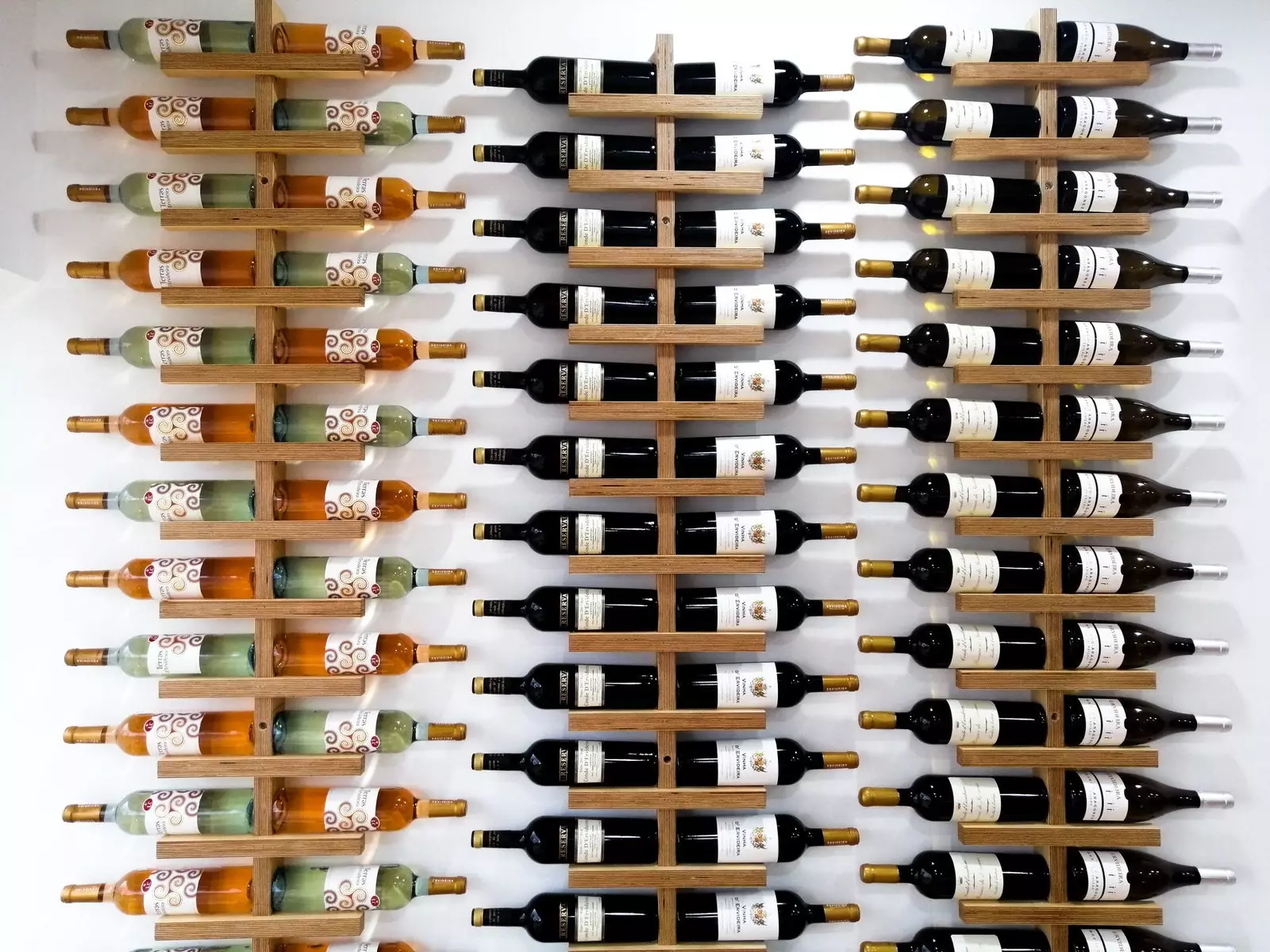
Alentejo wines in the store and tasting room Ervideira, Évora.
Almost opposite, on the same street, we are weak again and fall asleep before the charming Gente da Minha Terra store, with pieces of great beauty and originality made by artisans from all corners of the country that delight those of us who love beautiful things.
Oxalá is located in Largo Álvaro Velho, where crafts are also the protagonist: Alentejo ceramics, wool products, wooden objects or dozens of gourmet foods from the region fill its shelves. What a treat!
And to snack? Well, for a snack —or to treat yourself, whatever you want—, there is no doubt: Botequim da Mouraria, a small oasis in time and space where Domingo and his wife offer one of the most authentic experiences in Évora . Only one bar with space for nine people —they don't make reservations, so it's better to be early— and attention to detail that makes you want to take the couple home, are ingredients that add to the real party: the one that is celebrated on the plate.
Scrambled eggs with cogumelos, melted Alentejo cheese, clams in sauce, ham... All tasted, yes, while talking to Domingo about life and he does not stop refilling our glass of wine. Alentejo, of course. Top 10 product and even more top service: A foodie paradise which, by the way, closes on weekends for -according to Domingo- rest of the clientele.
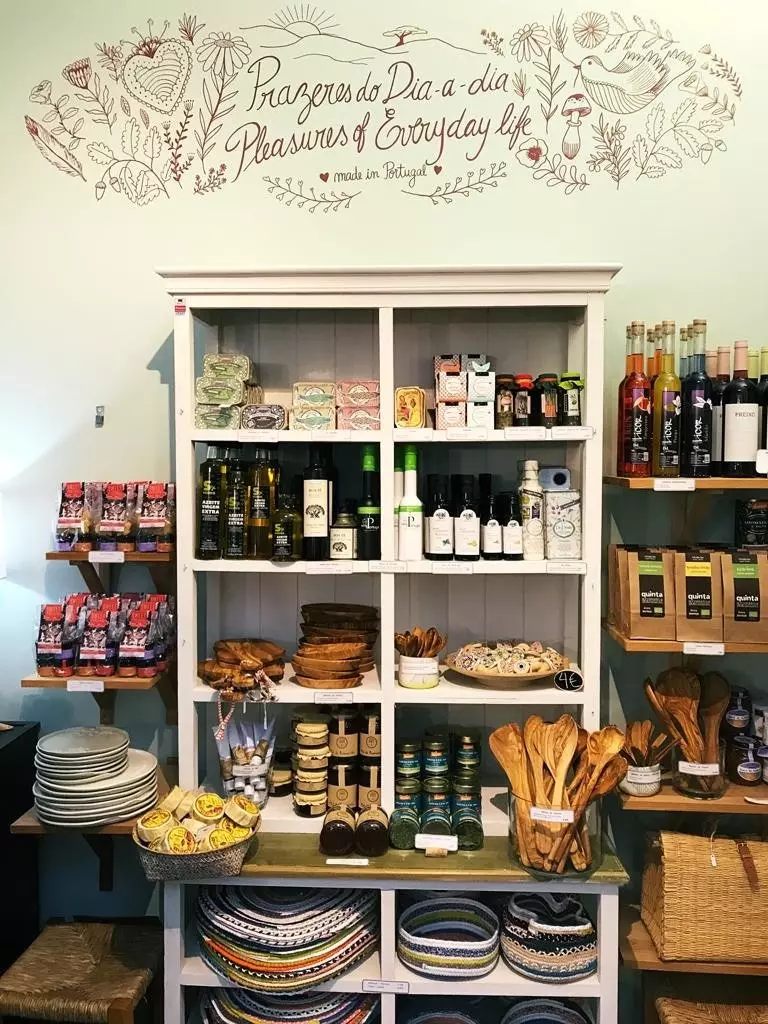
Shelf in the Gente da Minha Terra handicraft store, in Évora.
Another option for those who bet on something more innovative is Origens, where the chef Gonçalo Queiroz is inclined to give shape and flavor to a cuisine with roots reinterpreted along the most avant-garde lines. And we talk here about a trip to the most authentic Alentejo through innovative proposals. As a gift, views of the open kitchen where everything happens at the frenetic pace set by the orders.
Nothing like get carried away by some prawns with white wine that — oh, my God! — are to die for. Also its risotto with cogumelos or a classic: Alentejo pork, cooked with clams in a kind of sea and mountain that makes the senses explode. To top it off, a surprise from the chef —we'll leave it there— and a sweet wine to remember the experience. What more could you want?
To lower the food, you have to walk, of course. And we take the opportunity to look at the details of the shutters and doors, which ask us to be photographed loudly. Also in the whitewashed walls that, from time to time, surprise with one of those tiles that remind us where in the world we are. When we come to realize we have left the walls of the historic center and we are facing one of the most emblematic monuments of Évora: its university.
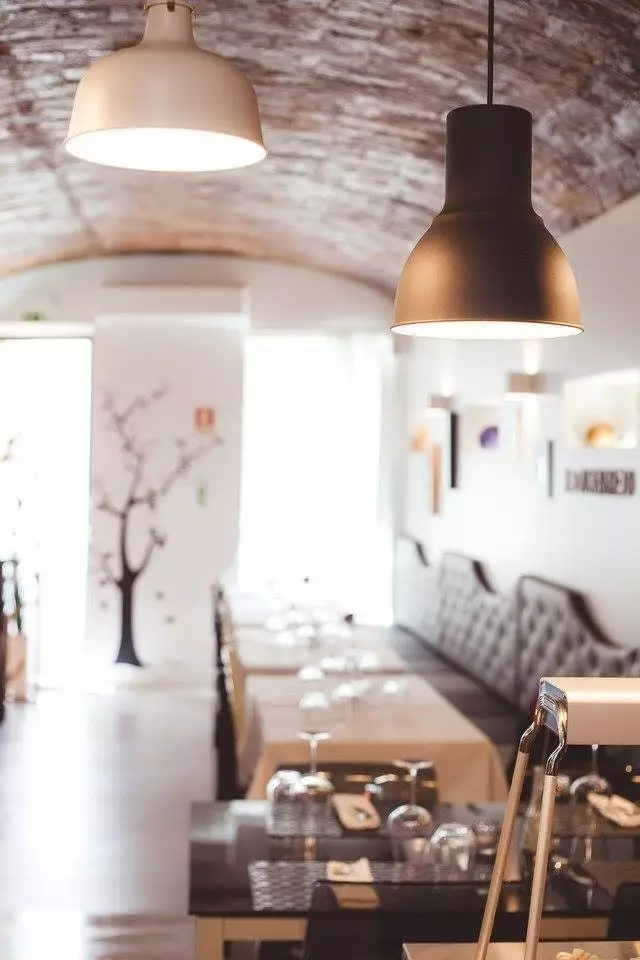
Hall of the Origens restaurant, in Évora.
STUDY BETWEEN TILES
There is no doubt that one of the main reasons why Évora, despite being so small —about 56,000 inhabitants—, is a lively and cheerful city, is because of its students. Because yes: Évora has a university. And it has been like this, in fact, since 1551, when it was inaugurated by Cardinal Don Henrique, although in 1759 it was closed by the Marquis of Pombal and remained inactive for 200 years.
The entrance allows us to wander through corridors, cloisters, patios and classrooms at our leisure —as long as classes are not being taught in them, of course—. In each room a new set of tiles surprises, always under a theme, although where it really ends up conquering us is in its library: the ancient shelves, stacked books, peace that breathes and, above all, the frescoes that decorate its ceiling, are incredible.
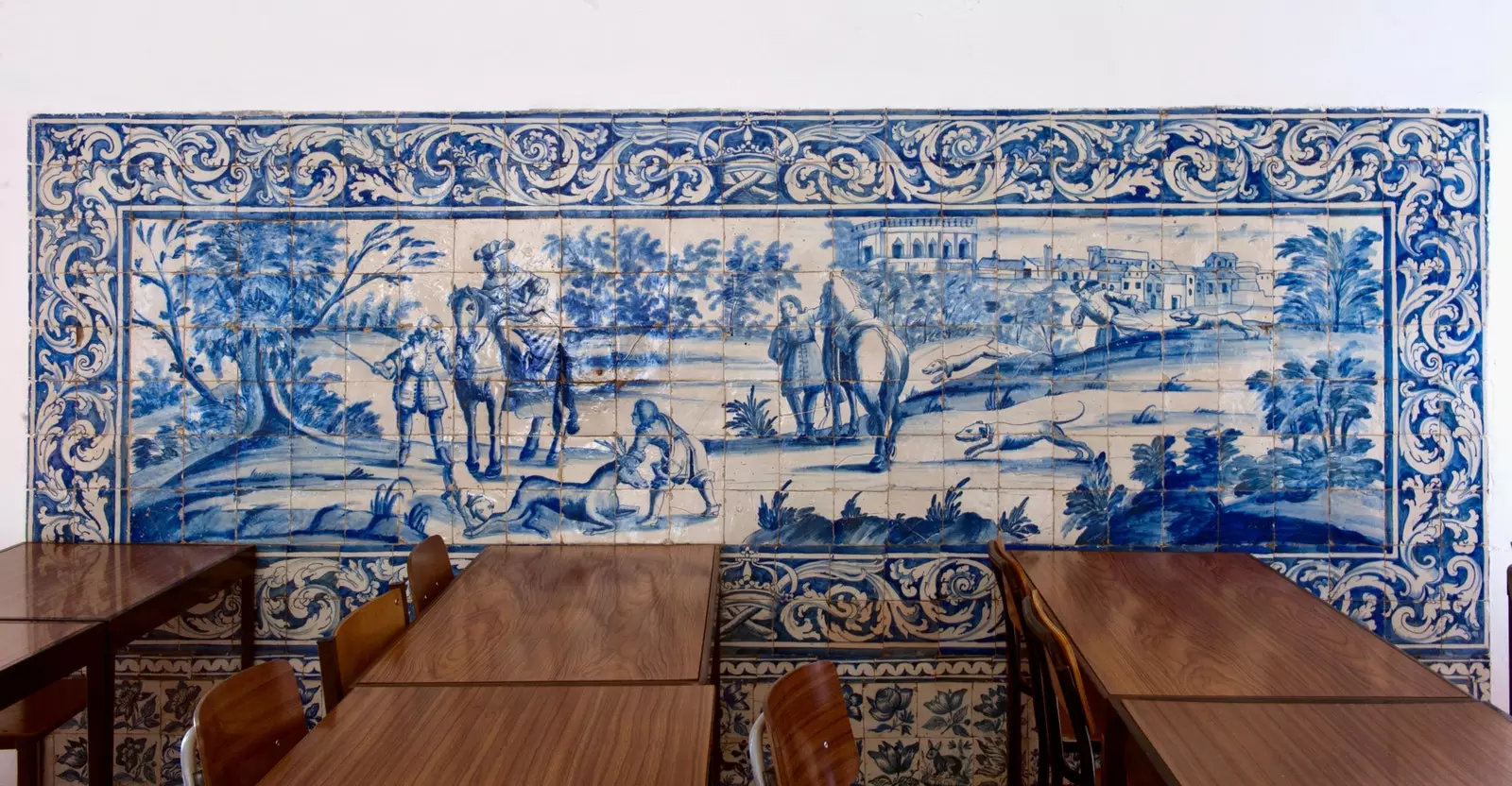
One of the classes at the University of Evora, a UNESCO World Heritage Site.
Having seen the university, it is time to visit another monumental emblem: the Chapel of Bones, the great attraction of the Convent and Church of San Francisco. And that what draws the attention of this place is precisely a room lined with thousands of bones It is said that they come from up to five thousand skeletons, not for nothing, but there is something creepy about it.
The point is that people crowd into it to contemplate the space in which what the Franciscans intended was to provoke reflection on the transience of human life and the commitment to a permanent Christian experience. We do not know if the message arrives, but the reality is that it has an impact. On the highest floors you can visit the church museum, its collection of nativity scenes and a terrace with great views.
And what we see from it is nothing other than the Jardim Publico, a beautiful park that contains some gems: some wonderful peacocks, a small kiosk where you can stop for a drink, why not, a little coffee, and the Palácio de Dom Manuel: yet another treasure, this time of architecture, as striking on the outside as it is on the inside.
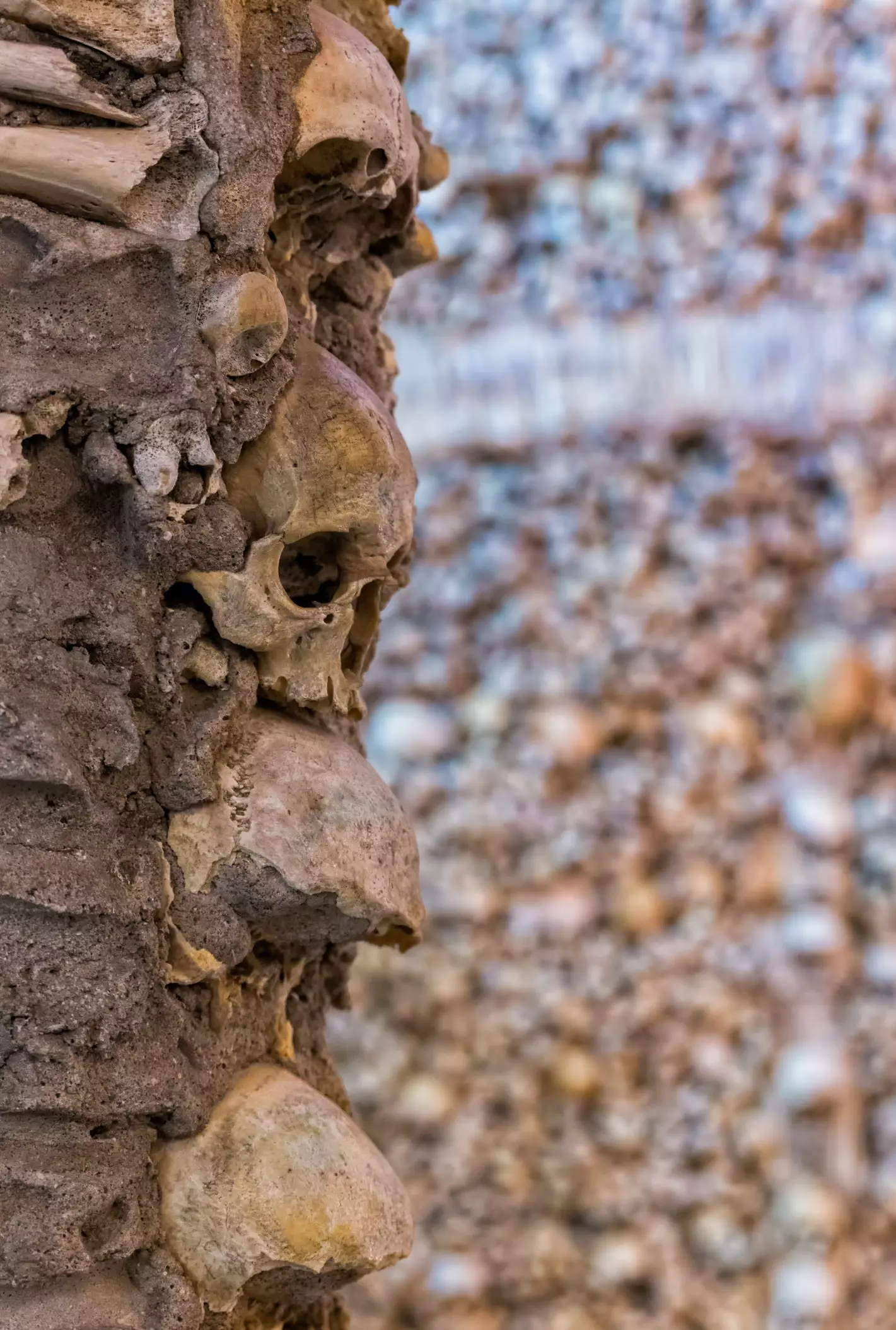
Impressive Chapel of Bones, in the Convent and Church of San Francisco, Évora.
WHAT ELSE, WHAT ELSE
Well, Évora has more little things, of course. For example, original businesses, for those who want to go shopping. One of them is Capote's Emotion, on Rua Miguel Bombarda. And what do they sell here? well the typical Alentejo capes used by men traditionally for farm work, but reconverted, based on 100% sustainable materials, into elegant and very stylish garments for women. And all handmade, hey!
Just opposite is the church of San Vicente, deconsecrated and used for events most colorful. We do not hesitate and take a look at its cultural programming: many afternoons and evenings concerts are organized, be it experimental, electronic, violin or even harp music. The perfect plan to end a day in Alentejo in style.
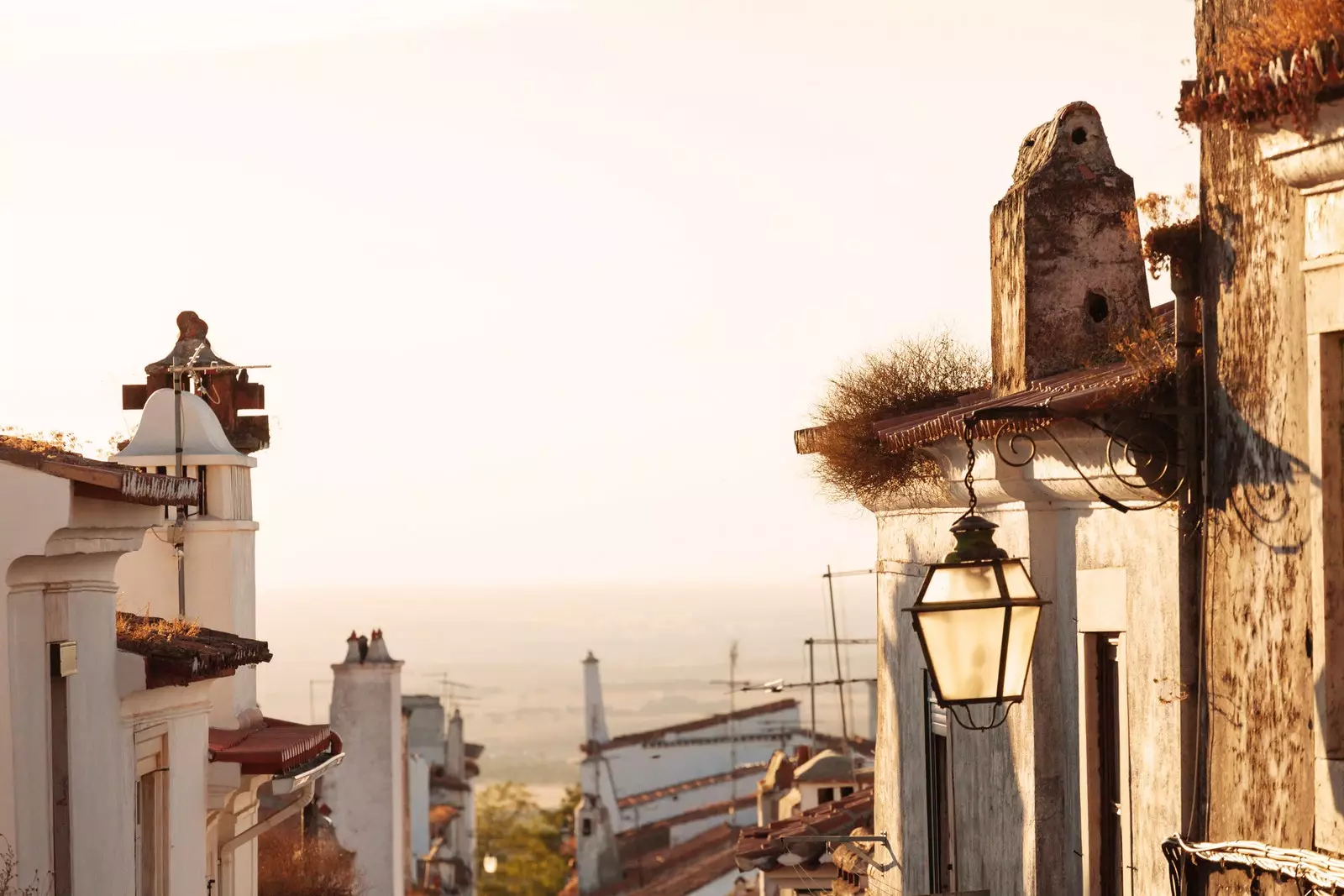
Beautiful sunset in Évora, Portugal.
WAIT YOU WILL LIKE THIS
But wait! That we still have a bonus track: just 30 minutes from Évora we make a stop to give ourselves the great tribute. How about we visit Estremoz, known as "the city of marble", to discover one of its great claims? And no, we are not talking about his castle or his homage tower. nor of its beautiful Rossio Square or the San Francisco Convent. We are not even referring to the pleasure of strolling through its convoluted historic center practically alone. We stopped in Estremoz, friends, to eat. Let's see, what did you expect?
And there is no one for miles and miles around who has not heard of Gadanha: the great gastronomic wonder of the region. There are Michel Marques —at the stove— and Mário Viéira —between the haberdasher, the cellar and the restaurant—, to offer the most exquisite cuisine and the most outstanding product in a display of gastronomic fantasy that is a unique experience.
The best? As always, let yourself be advised by the chef, although her lamb croquettes with roasted garlic mayonnaise, its scrambled eggs with wild asparagus and pork bacon or its Maldonado Iberian pork are a sure bet.
But, beyond the indelible memory that remains on our palate, in Gadanha we fall in love with the treatment, which makes everything even more special, and with the place, which exudes charm in every corner. How can we not feel at home?
And now yes: we're sorry, but stop the world. We stayed in the Alentejo.
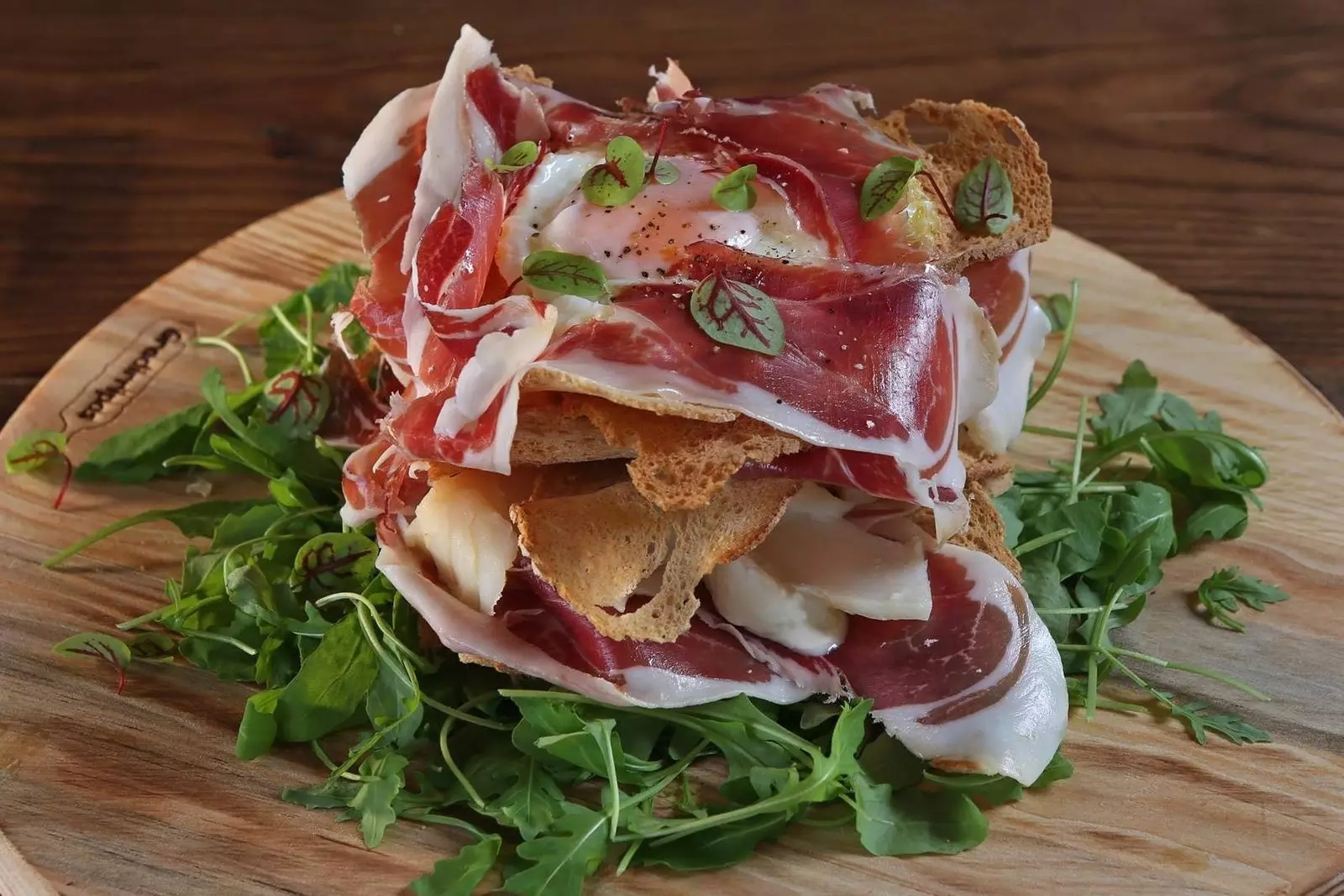
Salad at the gastronomic temple Gadanha Mercearia, in Estremoz.
